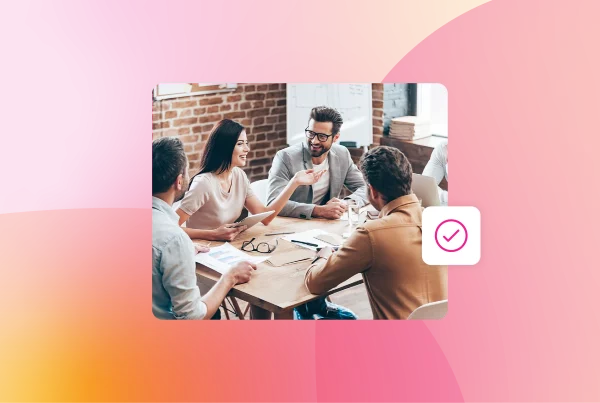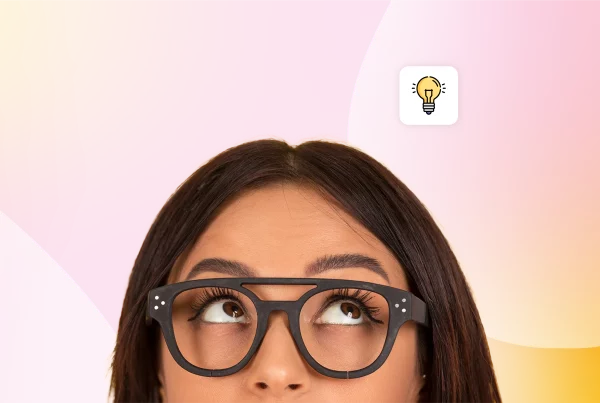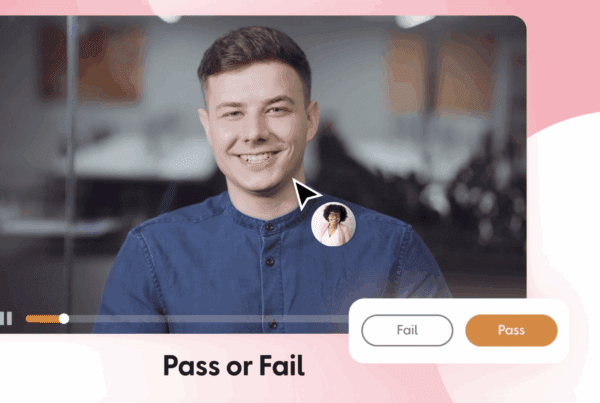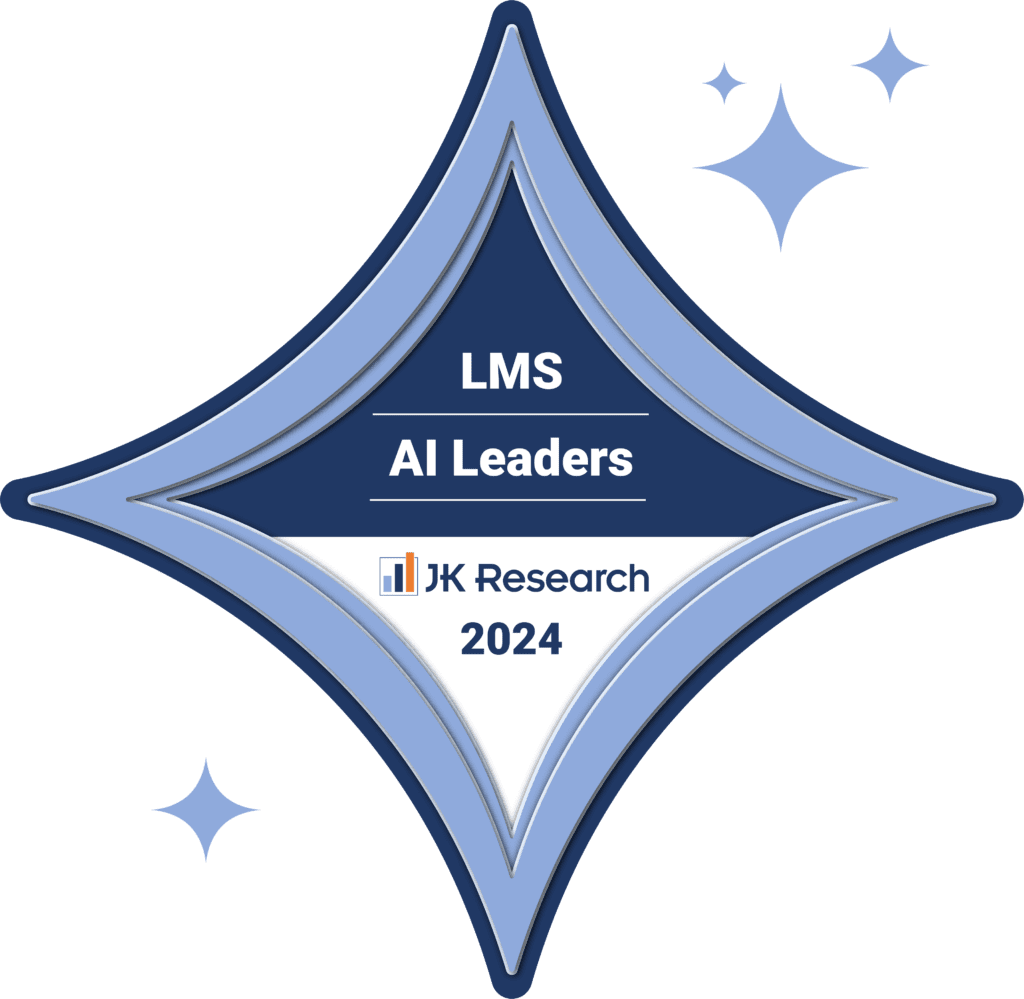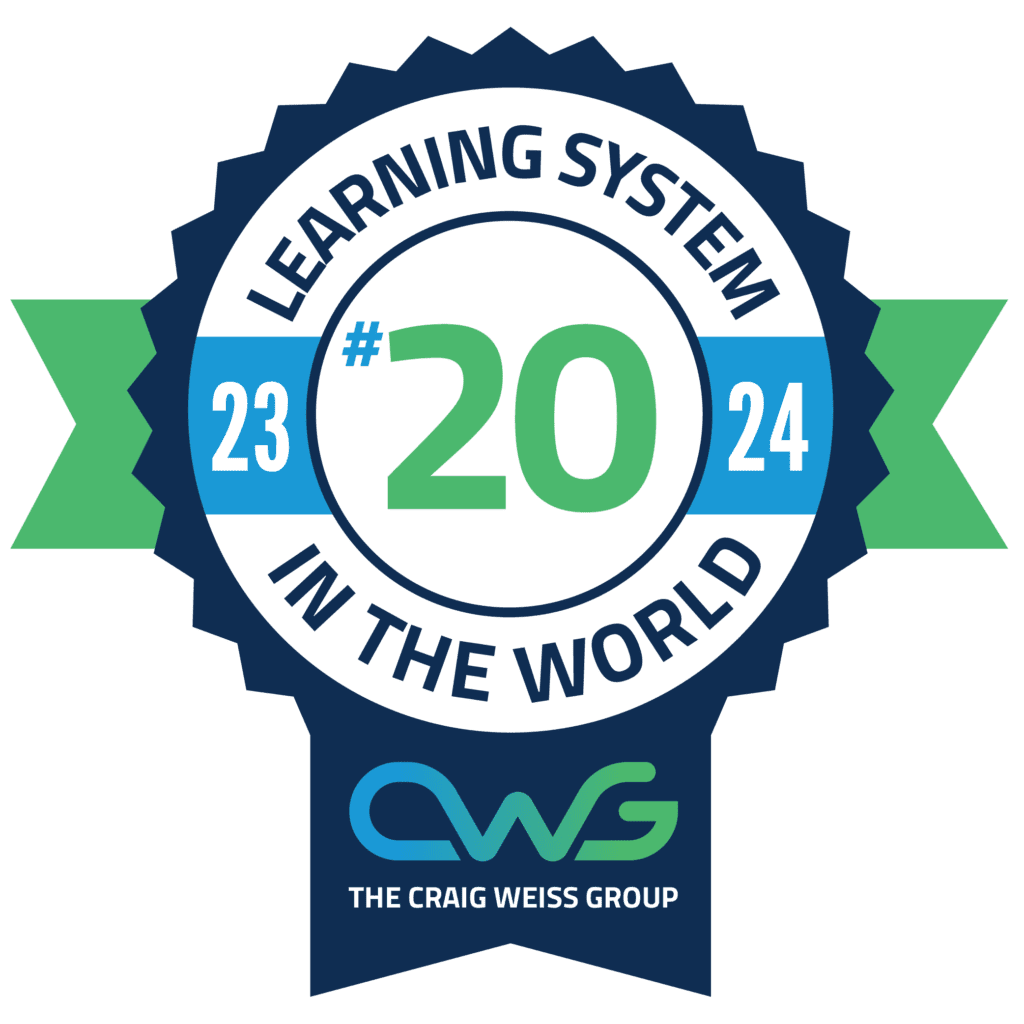The most profound learning experiences resonate with us on a deep level. This is true for both traditional in-person classroom and online e-learning environments.
Think about it this way…
People’s personalities, just as their learning preferences, are different.
What works for one group or one single individual may not work for another person or group. That’s what makes us all different, unique.
Basically, there’s no one-size-fits-all solution to learning.
In today’s fast-paced, results-oriented working environment, it has never been more important to make sure your L&D is on point. That you roll out a learner-centric approach, one that’s flexible, dynamic and personalised.
The question now beckons: how do you successfully upskill large groups of learners with different learning preferences, personal traits, and even levels of technology efficiency?
Simple. You adopt personal learning pathways. 🙌
Why is this important?
Well, if you’re able to encourage learners to connect with the subject material and become an active participant in the learning process, you put yourself in a strong position to guarantee that they fully understand and absorb the learning material.
In short, leverage personal learning pathways and you can optimise the learning process.
Let’s look at personal learning pathways in a little more detail, defining what they are, why they’re important, how to create them, and the common challenges organisations face.
What Is a Personal Learning Pathway?
Personal learning pathways are the future of corporate L&D. It’s really that simple…In fact, they should be the present.
As organisational leaders and senior decision makers know, the right learning and development can make or break success, driving employee engagement, improving retention and productivity.
In simple terms, personal learning pathways are customised learning experiences that directly reflect the professional and personal attributes of the learner’s organisation-wide. Learner needs, goals and styles are all factored into the experience or ‘pathway.’
There are seven key aspects to Personal Learning Pathways. These are:
Individualisation: learning is tailored to an individual’s specific needs, strengths, and learning preferences
Goal-oriented: pathways are structured around specific learning objectives, helping learners progress towards defined goals
Flexibility: Learners have the autonomy to move along the pathway at their own pace; the path includes a range of learning resources, including courses, modules, and experimental learning opportunities
Data-driven: Learning pathways often leverage data and analytics to personalise the learning experience and track progress
Engagement: By catering to individual needs and preferences, personalised learning pathways can enhance learner engagement and motivation
Continuous learning: Cultivates a culture of consistent learning and development in any professional setting
For maximum impact, content should be carefully curated and structured to align with each learner’s preferences, progress, skill gaps, even individual personality and learning style – this creates a more engaging and effective learning journey.
Organisations that use personal learning pathways (PLPs) can easily equip employees with the specific skills and knowledge required to excel in their roles, elevating performance and productivity.
They represent a shift away from the one-size-fits-all approach to training, recognising that individuals have different abilities, goals and aspirations.
Why Are Personal Learning Pathways Important?
Modern corporate environments have seen a significant evolution away from the one-size-fits-all approach to L&D, placing the focus on personal learning journeys and tailoring L&D to the individual learner’s needs.
This shift in focus has given rise to Personal Learning Pathways, which showcase a customised and individualised approach to L&D, giving organisations and their people the opportunity to pursue knowledge and skills that are specifically aligned with their needs, goals and strengths, while catering to unique learning preferences.
Imagine that you’re responsible for a large organisation. For argument’s sake, let’s say that it has 500 people with a diverse range of duties, responsibilities, learning preferences, and personalities.
You want to upskill everyone to use a newly-implemented software package, one that will revolutionise your L&D, account management, payroll, operations, or any other area of the organisation.
But here’s the problem. People are different.
They respond to different learning methods, strategies, preferences, and modalities. Sure, personalities can be grouped together (most salespeople are generally cut from the same cloth), but everyone responds to learning in different ways. 🤔
How do you ensure that learners get the most from their L&D experience, optimising the L&D process, ensuring maximum understanding and retention? Simple. Create personal learning pathways.
Examples of Personal Learning Pathways in Action
Workforces across a range of sectors greatly value upskilling. And the reason why is simple: professional development and career advancement, aligning opportunities with the learning styles and individual needs of each learner will optimise L&D’s effectiveness.
Develop a personalised learning strategy, one that’s both tailored to individuals and can be rolled out across the whole organisation, equipping them with the knowledge and skills needed to support professional and personal development, while engaging and motivating everyone, will facilitate engagement and knowledge retention. This is what PLPs do.
Below are a few examples of PLPs in action. As you’ll be able to tell, the benefit they offer transcends different roles across a range of industries.
Let’s say that you have a mid-senior level software developer, someone who has excelled at every stage of their career, and now they want to migrate into a leadership role. But they need additional skills.
Now, you could place the senior software developer in a one-size-fits-all training program.
One that includes a broad range of people organisation-wide, or you could choose the tailored approach, a Personal Learning Pathway, one that’s aligned with the senior software developer’s skillset, personality and career goals. This would work much better, right?
The senior software developer’s PLP could include:
- Mentorship with a senior decision-maker to develop leadership skills
- Completion of online leadership courses, such as agile methodology, team dynamics, negotiation and mediation
- Stretch assignments, such as leading small projects or mentoring junior developers
- Performance reviews and peer assignments to track progress and adjust goals
Of course, this is just a simple example of the types of PLPs that you could implement, one that outlines both hard and soft skills, all relevant to leadership, and can be completed across a flexible timeline, one that can be tailored to an individual’s workload.
Now onto a second example…
Let’s say you have someone in customer support who wants to elevate their career and do something different.
They’ve decided that they want to move into digital marketing. Keeping them in the same role will not make them happy, which, if not already, will affect their performance.
What can be done?
Well, you won’t be surprised to learn that designing a PLP specifically tailored to give them a clear route into digital marketing could be the ideal way forward.
Their PLP could include:
- Shadowing people in the digital marketing department to gain an understanding of their day-to-day duties, what their objectives are, what aspects of digital marketing they use, e.g., SEO, social media, PPC, content marketing, etc.
- Marketing objectives to see what the department’s targets are, e.g., increasing organic traffic, lead generation, improving brand awareness, etc.
- How marketing fits into the business to demonstrate how roles support the broader long-term and short-term company goals
How Learner’s Progress from Onboarding to Upskilling to Career Growth
Any learner’s journey from onboarding to upskilling and, ultimately, career growth is one where progress is a structured process that evolves over the course of their employment and designed to transform them someone with limited, if any, knowledge of their role, the organisation, even the sector, to a high-impact contributor to the organisation.
This process has three phases: onboarding, upskilling and career growth. Below is a brief overview of each phase.
Onboarding
In the initial onboarding stage, the learner is introduced to the foundational elements of their new environment – this is what an induction is for!
The learner familiarises themselves with the environment, the workflows, their colleagues, and what’s required of them.
Strong onboarding sets the tone for success by laying the foundations for success, which accelerates the time to productivity.
Upskilling
With the new starter successfully bedded in, the next phase is upskilling. This phase is focused on growth by closing knowledge gaps, mastering core competencies and expanding abilities into new areas.
Learners can take part in a range of L&D activities to improve their knowledge, skillset, and, ultimately, value to an organisation.
Better still, businesses leveraging AI-driven L&D platforms, like Thirst, can create personal learning pathways, promote a continuous learning culture, promote flexible learning, create skills mapping and career pathways, amongst a host of other benefits.
Career Growth
After a period of consistent L&D, learners graduate to the final phase…career growth, where skills and experience translate into advanced opportunities.
At this stage, learners can choose to seek opportunities that align with their abilities, interests and strengths. They may decide to lead teams, manage projects, or contribute to strategic goals that are aligned with the organisation’s values.
As you may be able to anticipate, these linear steps fast-track individual success but also a stronger, more agile organisation equipped to thrive in an evolving commercial landscape. ⭐
How to Create Effective Personal Learning Pathways
As you can probably imagine, the success of a Personal Learning Pathway hinges on how effective it is. Get it right and it can be a game-changer. Get it wrong and learners can feel like a square peg being forced into a round hole.
Creating effective PLPs isn’t as difficult as you may think. In fact, all you need to do is follow the step-by-step guide below!
Step One: Identify Learner Goals and Skills Gaps
The first step to creating an effective PLP is identifying learner goals and skills gaps.
To do this, organisations must look at the core competencies within their organisation and analyse if they meet what’s required within the sector.
Effective PLPs allow organisations to address and plug any skills gaps, solving issues while simultaneously planning for future challenges and potential changes.
Step Two: Create a Skills Matrix
Once you’ve identified your goals and skills gaps, the next step is to create a visual representation of the skills employees need to develop to meet learning objectives, otherwise known as a skills matrix.
To do this, start by listing the learning objectives. These could be anything from improving interdepartmental collaboration and developing and deploying IT applications to building an inclusive and psychologically safe environment and improving literacy with collaboration tools, such as Miro, Slack or Teams. 💻
Step Three: Curate or Create Content Aligned to Needs
The next step is to create or curate content that’s relevant, aligned, accessible, and even tailored to specific learner roles, skill levels, and career aspirations.
There are several reasons why this is important. For one, learners are more likely to remain engaged and motivated. By focusing on content that’s aligned to the needs, learners focus on what they need or would like to learn, building a sense of ownership.
This allows organisations to strategically invest in L&D, equipping a workforce with the tools they need to thrive, while creating a culture of continuous improvement through purposeful learning and a culture of continuous learning.
Step Four: Use Tech to Personalise and Automate
As you’ve likely guessed, a key aspect of PLPs is the personal aspect. Not only does technology, like Thirst’s AI-driven learning platform, promote tailored, scalable learning experiences with relevant content, but it also provides dynamic, immersive learning journeys for learners.
Additionally, automation reduces the burden on L&D teams, allowing them to focus more on strategy and less on time-consuming content curation. The added benefit of reminders and assessments creates a seamless, self-directed experience for learners.
Step Five: Monitor Progress and Adapt over Time
The last step to creating effective learning pathways is to monitor progress, measuring the impact on employee skills, knowledge and performance over time. Then adapt and iterate to improve performance. ☺️
To do this, refer to the learners’ goals and skills gaps outlined in step one and compare performance before and after PLPs were implemented. Be sure to pay attention to your LXP and LMS content. The data you glean may be able to help you further improve performance over time.
Common Challenges (And How to Overcome Them)
As with anything else in the L&D space, PLPs are not without their own common challenges! Being aware of each of these challenges (and how to overcome them) will help organisations to scale personal learning pathways, maximising their impact.
Leadership Buy-In
Getting buy-in from leadership teams can present a challenge to PLPs. But why, if they have so many clear benefits? Well, there are a few different reasons which we’ve summarised below:
- Lack of strategic alignment: Leaders can view PLPs as not being a priority because they don’t directly support performance and growth
- ROI questions: It’s a mite more challenging to see an immediate ROI from self-directed and personal learning pathways
- Implementation complexity: strategic scaling can be costly, focused on tech innovation or difficult to manage, making the whole process less than seamless
- Cultural resistance: Should the organisation promote a top-down or compliance-driven L&D culture, giving personal autonomy to learners can feel risky
- A diverging focus: leaders may feel that key employee duties will be delegated away from priorities, taking the focus away from day-to-day activities
To overcome these common challenges, organisations could shift the conversation from one of “learning” to business outcomes by aligning PLPs with strategic business goals, framing PLPs as a talent strategy, not just a learning experience and involving leaders in the process.
Limited Resources or Tech
Access to a modern, high-performance LMS, like Thirst, significantly improves the performance, personalisation, tracking, adaptability, scalability, and, ultimately, the success of any PLP.
Conversely, poor Learning Management Systems are unable to deliver content at scale, recommend skills gaps, have limited reporting, making measuring an ROI difficult, and do not even have access to essential course content to successfully implement PLPs.
How to overcome this challenge? Choose an AI-fuelled learning platform like Thirst to spearhead your L&D.
Content Relevance
It’s not hyperbole to say that PLPs stand and fall based on the relevancy of their content. When content isn’t relevant, learners disengage. This can pose problems for more than one reason.
For starters, it’s a waste of time for learners to engage with content that isn’t relevant to their role, hardly improving performance and skills. Modern LXP’s, like Thirst, leverage AI to recommend the right course content.
Critical knowledge gaps will go unaddressed if you’re organisation does not use relevant content to upskill employees. This won’t improve organisation-wide performance. In fact, it may confuse some learners.
Keep content relevant, tailored, and personal, and learners will connect with the material and absorb exactly what they need to.
Time Constraints
Finding an appropriate amount of time to devote to PLP L&D is another challenge that businesses face.
With our busy working lives, many employees struggle to find the time to devote to professional development, like PLPs.
The good news is that this lack of time can be easily circumvented by shifting your focus to a more effective way of learning, and one of the most effective learning strategies when time is precious is bite-sized learning.
Failing that, there’s nothing stopping you from embedding learning into workflows.
From project-based learning to job shadowing, even completing online L&D modules in a spare hour or two in the week, time constraints needn’t be the limiting factor to learning.
Tools and Tech that Support Learning Pathways
Being able to access the right tools and tech is paramount to successfully implementing any personal learning pathways. Thankfully, today there’s a wealth of options to manage and distribute L&D.
ChatGPT
Of course, we all know about ChatGPT.
The LLM has blossomed into what many organisations see as the go-to resource for boosting efficiency, creating content at scale, gaining valuable insights, and even improving the overall customer experience. But what are some other tools and tech that support learning pathways?
Let’s review which LMS platforms support PLPs. The good news is that you’ve got a range of options to choose from, allowing you to automate the learning experience, tailoring learning to your organisation.
Thirst
Let’s take a look at our own platform, Thirst.
By using AI and data analytics, Thirst focuses on delivering relevant content and recommendations tailored to individual learner needs, preferences and goals, creating customised learning paths for learners through skills mapping and adaptive learning.
From dynamic content recommendations, such as videos, articles, quizzes and courses based on user preferences to resources and courses specifically designed to help learners develop new skills and advance their careers, and so much more, Thirst helps organisations to design and implement PLPs.
Canvas
Canvas is a modern, cloud-based Learning Management System (LMS) widely used by educational institutions across the UK.
It provides a flexible, user-friendly platform where administrators and educators can design, deliver, and manage online learning experiences.
Canvas supports multimedia content, assessments, discussion boards, and integrations with a wide range of third-party tools like Google Workspace, Microsoft Teams, and Zoom.
Its intuitive interface and mobile app make learning accessible anytime, anywhere, which is essential for today’s hybrid and remote learners.
The LMS supports personal learning pathways by enabling instructors or learning designers to create customised learning journeys based on individual student progress, roles, or skill levels through its Mastery Paths – adaptive content that ensures learners get access to the right content at the right level.
360 Learning
A collaborative learning platform designed to transform traditional corporate training into a more engaging, social, and agile experience, 360Learning helps organisations optimise and automate their onboarding, sales enablement, customer training, and more.
Unlike conventional Learning Management Systems (LMS) that focus primarily on top-down content delivery, 360Learning emphasises bottom-up, peer-driven learning, allowing subject matter experts (SMEs) across an organisation to easily create, share, and iterate on training materials.
FutureLearn
FutureLearn is a free, open, online learning platform accessible to everyone across the globe.
The platform partners with universities and industry professionals to provide micro-credentials and guided programs to upskill people in a wide range of subjects.
Users can follow specific learning paths or credentials, using skills mapping, based on prior experiences, that can be adapted to improve learning.
Final Thoughts: Why Your Learners (and Organisation) Will Thank You
Everyone is different. They have different learning preferences, methods, strategies, preferences, and modalities.
To get the best out of your L&D, you need to map and adapt learning to individuals.
Meeting the needs of your learners (and the organisation as a whole) is paramount to successfully implementing L&D. For this reason, PLPs hold the key to successful L&D.🔥
Get PLPs right and your organisation will thank you!
Learners get access to experiences that seem relevant and tailored to them. They can learn at their own pace and make great strides in their knowledge, leading to faster, smarter growth.
Organisations benefit from a highly-skilled workforce, one that cultivates employee happiness, loyalty, leading to strong retention rates. Better still, by leveraging PLPs, organisations can close skills gaps, creating L&D experiences that are aligned with strategic goals. The result? Better ROI from learning initiatives.
Got 2 Minutes?
If your organisation is struggling with disengaged learners, Thirst has the solution. 🔥
Thirst is an AI-powered learning platform that helps L&D teams of all sizes boost learner engagement and create experiences tailored to today’s learners.
Take a guided tour today and see Thirst in action.
For more e-learning insights, resources and information, discover the Thirst blog.
You may also enjoy:
LMS Adoption Strategy: The Complete Playbook | Employee Pre-Boarding: Steps to Wow New Hires | Cultural Diversity Training: What It Is, Why It Matters, and How to Get It Right

